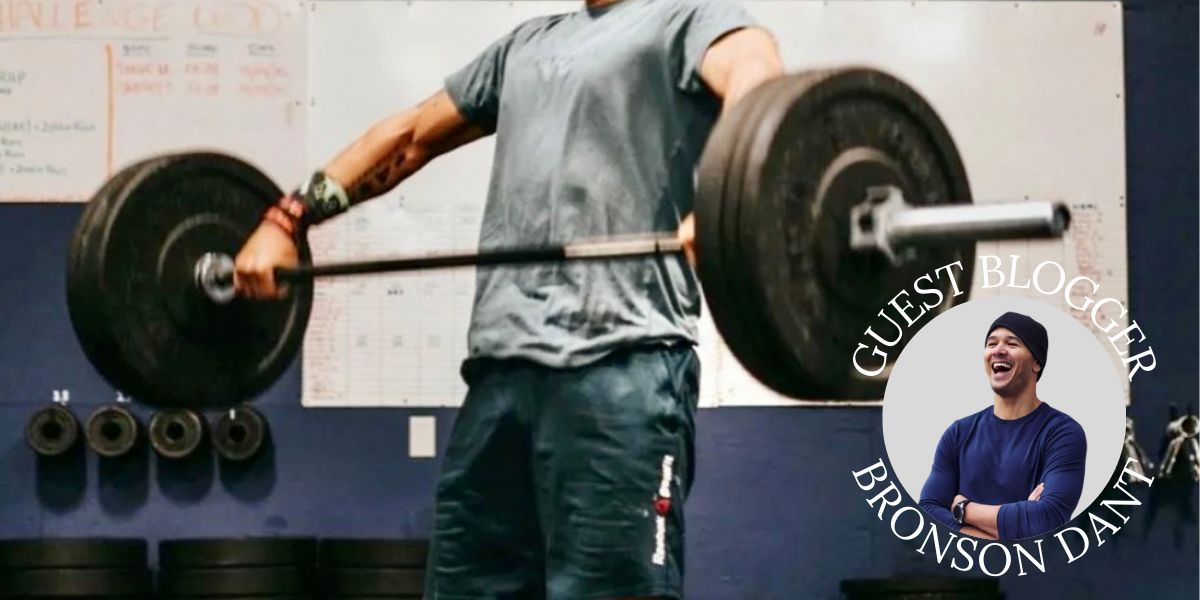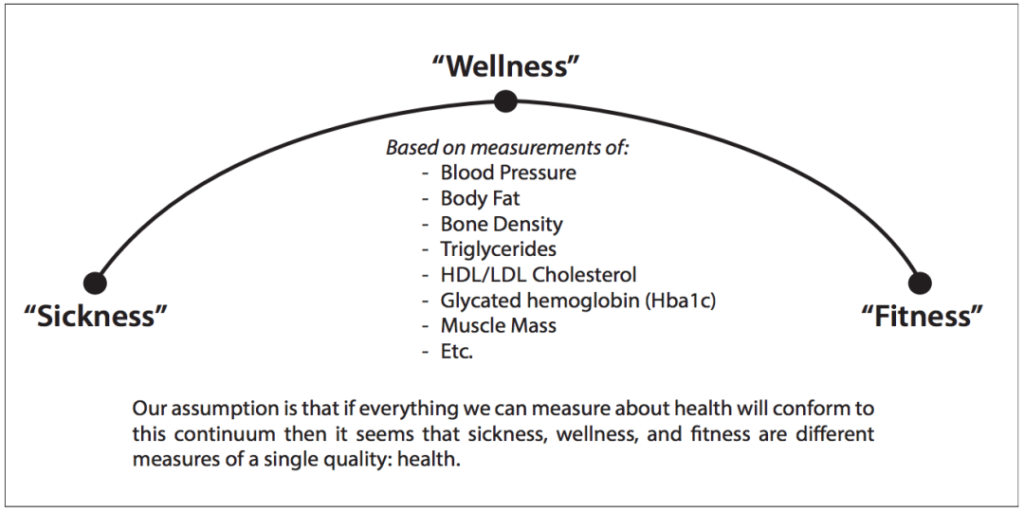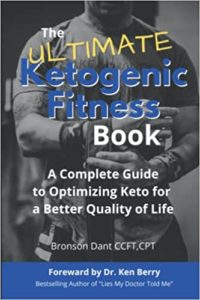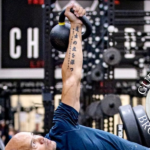
Setting Individual Fitness Goals
- awentworth
- July 30, 2022
- Fitness Guest Blogger Lifestyle
Please welcome guest blogger Bronson Dant. He is a health & Crossfit coach, personal trainer, creator of the Apex System, and my favorite fitness guru.
There’s so much information about fitness and so many different people with a myriad of approaches, levels of experience, and individual goals.
How do we make all of it fit into any one person’s lifestyle?
How do you look at the thousands of videos and articles on fitness and find something that works for you?
What should you even be trying to do? How do you know what your first fitness goal should be?
You watch one fitness “pro” on YouTube and they say you should learn how to do a bunch of bodyweight stuff on a pull-up bar.
Another person on Instagram is talking about how kettlebells are the best solution to build muscle and burn fat….. but, if that’s the case how is this other person who’s got some giant rubberband contraption, saying the same thing???
The best way to figure out what you should do and what goals make sense for you is to take a look at what fitness is and figure out where you are in reference to a baseline of general fitness benchmarks.
What is fitness?
For starters, it’s important to understand the relationship that fitness has with health.
Fitness is, by definition, your body’s ability to do work. That means the more work it can do, the better it is functioning. The more efficiently you can get your body to function, the healthier it is. Fitness is literally the physical representation of health.

10 Components of Fitness
There are 10 very specific characteristics that detail what it means to be fit. Remember that fitness is the comprehensive ability of your body to perform efficiently and do work. That means each of these is an important part of the whole puzzle.
– Cardiorespiratory Endurance: How long can you go?
– Stamina: How long can you sustain a high level of effort?
– Strength: How much weight can you move?
– Flexibility: Can you operate in full ranges of motion?
– Speed: Can you move quickly?
– Power: How much can you move quickly?
– Coordination: Can you feel and control complex movement?
– Accuracy: Can you make your body do what you want it to?
– Agility: Can you change direction efficiently?
– Balance: Can you use your body unilaterally?
Your ability to perform in each of these areas is how you determine your level of fitness. The work you do to improve your ability in these areas will directly impact and improve your overall health.
Making it Work
That’s a lot, isn’t it? How in the world do you work on all of that stuff at the same time???
The short answer is that a good program works pieces at a time but keeps a broad application of the principles and has a built-in overlap to increase training efficiency and reduce the time demand.
NOTE: This article is not intended to guide you in building your own plan. I am making the assumption that you are following a professionally developed program like The APEX At Home program, where a coach is providing a progressive and scalable solution to help you improve in all areas of fitness.
In general, we can boil the 10 components down to 4 main areas each person should focus on. Let’s call these, The 4 Pillars of Fitness.
– Strength: Muscular endurance, maximal strength, muscular stamina
– Mobility: The range of motion, stability (proper mechanics + strength in extension)
– Metabolic Conditioning: Aerobic and Anaerobic, 3 metabolic pathways
– Recovery: Required for growth and super-compensation. Prevents overtraining and injury.
When we start evaluating where you are and setting your fitness goals these are the general areas that will be covered. This lets us improve the broadest spectrum of fitness without getting overly complicated.
The definition of fitness is the ability to do work, not the ability to wear a bikini.Source
Evaluate and Set Goals
Now that we know what fitness is let’s talk about how to gauge and figure out where you are and where you want to go.
While going through this process, always follow the principle that Technique comes first, then it must be performed Consistently before Intensity is increased.
That being said I’m going to provide 3 levels of benchmarks that you can use to evaluate and set goals against. (These don’t really mean anything. They’re just labels to identify the progression.)
Keep in mind, the benchmarks and guidelines I’m putting in here are progressive and you should not advance to something if you have not been able to consistently perform the previous benchmark in that area… do not jump ahead.
NOTE: When I say “perform”, that includes the proper range of motion and execution of the movement, NOT just the weight. Move correctly first, every time.
I’m going to assume that no matter your background or experience, that you are starting with the first set of benchmarks and working your way through. You may be able to perform in more than one level at a time, that’s perfectly fine and normal.
Benchmark 1
- 10 Goblet Squats @ 25% of bodyweight
- 25 Banded Good Mornings
- 1:00 Plank
- 1:00 Dead Hang
- 1:00 Lateral Extension Hold
- 10:00 Cardio (non-stop)
Benchmark 2
- 10 Goblet Squats @ 50% of bodyweight
- 10 DB/KB Deadlifts @ 75% of bodyweight
- 5 Push-ups
- 10 Sit-ups
- :30 Pull-up Hold
- 5 DB/KB Strict Shoulder Press @ 50% bodyweight
- 500m Row/400m Run/1000m Air Bike under 3 Mins
- 1 Mile Run or 2000m Row under 10:00
Benchmark 3
- 10 DB/KB Front Rack Squats @ 75% bodyweight
- 10 DB/KB Deadlift @ 125% bodyweight
- 20 Push-ups
- 25 Situps
- 5 Strict Pull-ups
- 10 DB/KB Strict Shoulder Press @ 50% bodyweight
- 500m Row/400m Run/1000m Air Bike under 2 Mins
- 1 Mile Run or 2000m Row under 9:00
These are general benchmarks you can use to test your progress and set some goals. They are progressive so there is no expectation that they will all improve at the same rate. Just keep working and be consistent.
I hope this is a valuable resource that you can use to help plan your journey. Share it with your circle of friends and maybe they can join you as you improve your health.
Remember that I am here to help. When you subscribe to APEX At Home, you have access to me as your coach anytime you need me.
Coach Bronson
Website: https://apxts.com
IG: https://www.instagram.com/bronsondant72/
Facebook: https://www.facebook.com/bronsondant72
TikTok: https://www.tiktok.com/@bronsondant72
Youtube: https://www.youtube.com/channel/UCkx53Rm4zkhWT2t9zHpx9Xg
Apex Fitness App Link & Code: https://bit.ly/3tzU2s4 (Code: LoneStarKeto for $5 off a month)

Bronson Dant didn’t start his fitness journey until he was 40 years old. Since then he has transformed himself and developed a passion for helping people improve their quality of life and gain personal freedom through fitness and nutrition. Bronson has spent years training and learning about fitness and nutrition. Over the last 8 years, he’s gained multiple certifications and attended every training opportunity he could find. In 2014 he opened a CrossFit gym and, over 5 years, helped hundreds of people transform their lives. About a year ago he started The APEX Training System and moved his fitness and nutrition coaching business online.
As a dad and a grandfather, Bronson is super pumped to help men lead by example, find their inner power, and take control of their lives. Bronson’s training and coaching philosophy centers on removing things that are holding you back and focusing on things that improve efficiency and performance. He believes the goal of fitness is to make you stronger and ready to take on whatever the world throws at you. Bronson follows an animal-based nutrition plan that prioritizes protein-rich foods and eliminates any foods that cause interference with the optimal function of our bodies.
A lion fears nothing.
AFFILIATE NOTICE: LoneStarNutritionTherapy.com participates in the Amazon affiliate program and this post may contain affiliate links. This does not affect the integrity of the site. The author of LoneStarNutritionTherapy.com will not recommend or stand behind any product that she does not fully endorse.o.



